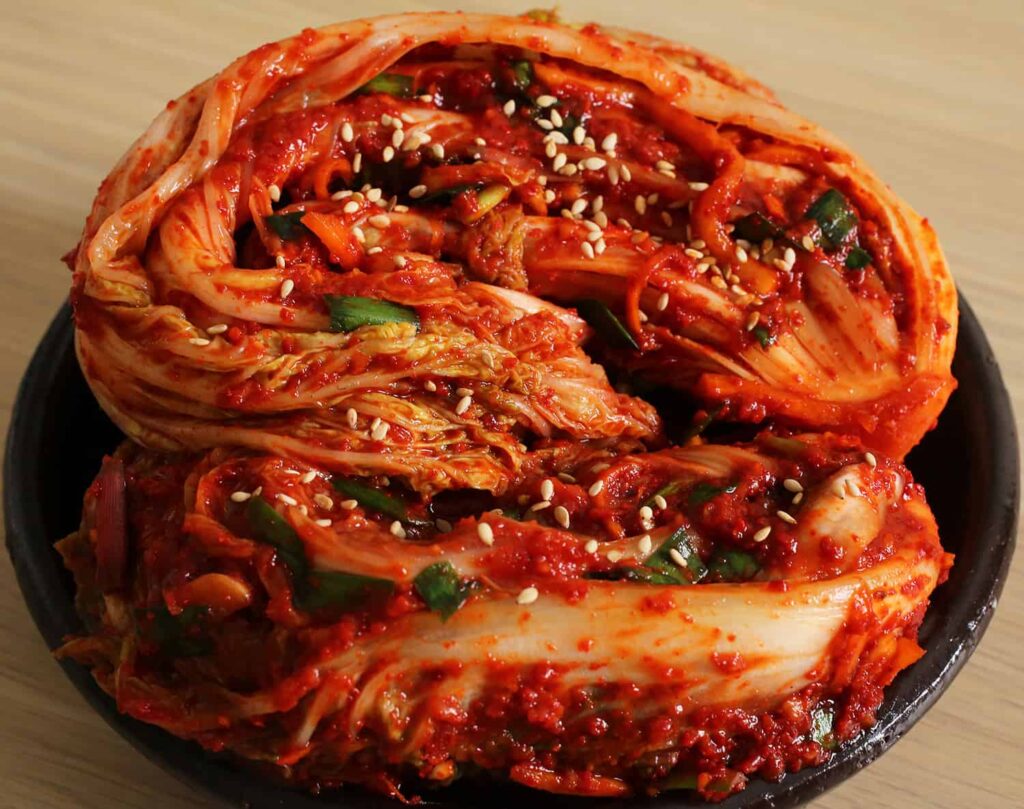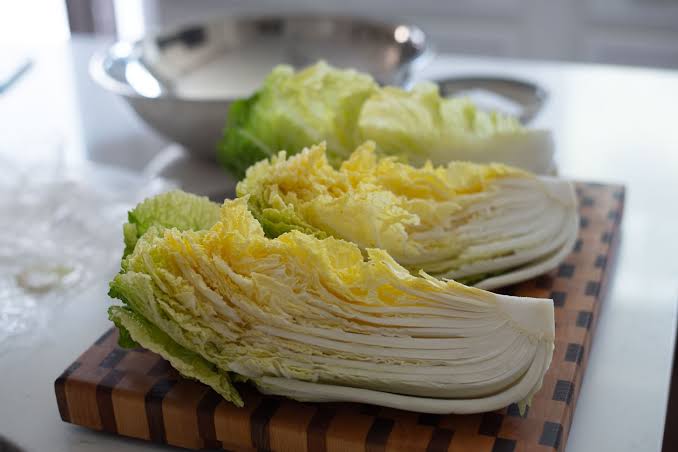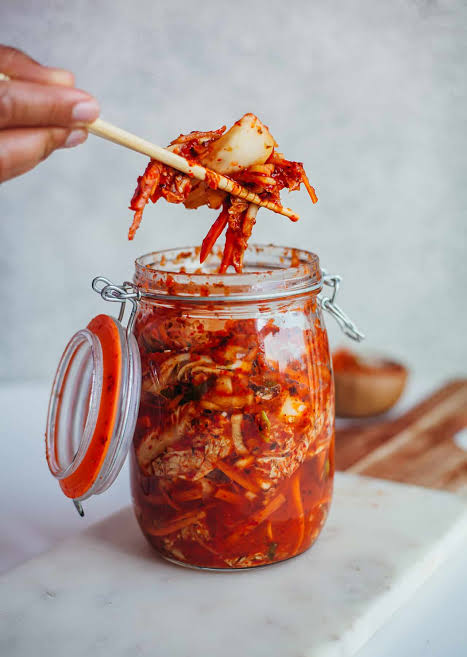Though Kimchi is considered spicy, it has a slightly sour taste. The Korean version of our ogiri and locust bean in that it is especially special and unique to the Koreans as ogiri is to the Igbos. It can be eaten with rice, noodles, bulgogi (Korean beef) and other foods.
It is made with one’s hands and not any utensils. Also, it is made in large quantities. This is because it is fermented and kept for future use.
Are you looking to add some excitement to your meals? Look no further than handmade Kimchi, the spicy and tangy Korean condiment that has been enjoyed for centuries. In this article, we’ll explore its benefits, how it differs from store-bought, and how to use it to elevate your meals.

Handmade Kimchi is a labor of love. It is made using traditional fermentation methods, which involves salting the vegetables and allowing them to ferment for several days or weeks. During this time, naturally occurring bacteria break down the sugars in the vegetables, creating lactic acid and giving it a tangy and complex flavor.
One of the benefits of handmade Kimchi is that it is typically made in small batches, which allows for greater attention to detail and a more consistent flavor. Additionally, because it is made using traditional methods, it is often more authentic and flavorful than store-bought Kimchi.

How to Elevate Your Meals with Handcrafted Kimchi
Here are some tips:
- Use it as a condiment: it is a versatile condiment that can be used to add flavor and texture to a variety of dishes. Try adding it to sandwiches, burgers, or tacos for a spicy and tangy kick.
- Add it to stir-fries: it pairs well with stir-fried vegetables and meat, adding a bold and savory flavor to the dish. Try adding it to stir-fries made with tofu, chicken, or beef for a delicious and nutritious meal.
- Use it as a topping: it can be used as a topping for rice bowls, salads, and even pizza. Its bold and spicy flavor makes it a great addition to any dish that needs a little extra flavor.
- Make Kimchi Fried Rice: Kimchi Fried Rice is a classic Korean dish that combines cooked rice, chopped Kimchi, and other ingredients such as diced vegetables, meat, or seafood. It’s a quick and easy way to use up leftover rice and add some excitement to your meals.
How to Make Handcrafted Kimchi

- The time it takes to make it can vary depending on the recipe and the temperature and humidity of your environment. However, in general, it takes about 3-5 days to make handmade Kimchi using traditional fermentation methods.
- The first step in making handmade Kimchi is to prepare the vegetables, typically Napa cabbage, radishes, and scallions. The vegetables are washed and sliced, and then salted to draw out excess water and create a brine.
- The vegetables are then mixed with a variety of seasonings, including chili flakes, garlic, ginger, and fish sauce, and packed tightly into a jar or crock. The jar is then left to ferment at room temperature for several days or weeks, depending on the desired level of sourness and tanginess.
- During the fermentation process, naturally occurring bacteria break down the sugars in the vegetables, creating lactic acid and giving it a tangy and complex flavor. The length of time required for fermentation will depend on the temperature and humidity of your environment. Warmer temperatures will speed up the fermentation process, while cooler temperatures will slow it down.
- After the it has fermented for the desired amount of time, it can be stored in the refrigerator and enjoyed for several weeks or even months. The longer it ferments, the more complex and tangy the flavor will become.
Signs of Spoilt Handmade Kimchi

Kimchi is a fermented food, which means it can last for several weeks or even months if stored properly. However, like any food, Kimchi can go bad if it is not stored or handled correctly. Here are some signs that your Kimchi may have gone bad:
- Foul odor: If your Kimchi has a foul or rotten odor, it may have gone bad. Kimchi should have a tangy and slightly sour smell, but if it smells overly pungent or rancid, it is likely spoiled.
- Slimy texture: If your Kimchi has a slimy or mushy texture, it may have gone bad. Kimchi should have a crunchy and slightly chewy texture, but if it feels slimy or mushy, it is likely spoiled.
- Mold or discoloration: If your Kimchi has mold or discoloration on the surface, it may have gone bad. While some white or gray discoloration on the surface of the Kimchi is normal, black or green mold should be a cause for concern.
- Bubbles or bulging: If your Kimchi is bubbling or bulging, it may have gone bad. This can be a sign of excess gas production during fermentation, which can be caused by harmful bacteria.
Storage Process

To ensure that your Kimchi lasts as long as possible, store it in an airtight container in the refrigerator, and make sure to use clean utensils and containers when handling it. Additionally, if you notice any signs of spoilage, it’s best to err on the side of caution and discard the Kimchi to avoid the risk of foodborne illness.
If you notice any of these signs, it is best to discard the Kimchi and not consume it. It’s important to note that while Kimchi can last for several weeks or months, the length of time it lasts will depend on factors such as the temperature and humidity of your environment, the quality of the ingredients used, and the cleanliness of the utensils and containers used during the fermentation process.
Now you know that handmade Kimchi is a delicious and nutritious condiment that can elevate any meal. Its bold and spicy flavor pairs well with a variety of dishes, and its health benefits make it a great addition to any diet. So why not try adding some handmade Kimchi to your next meal and see how it can take your cooking to the next level?


